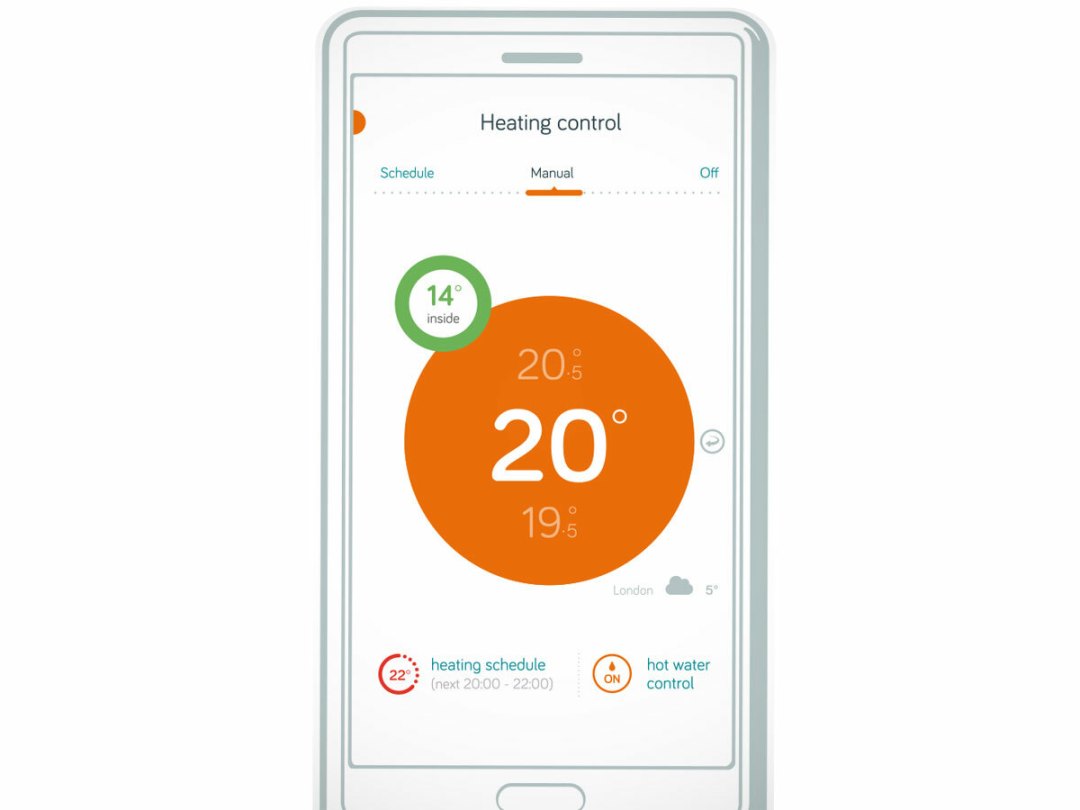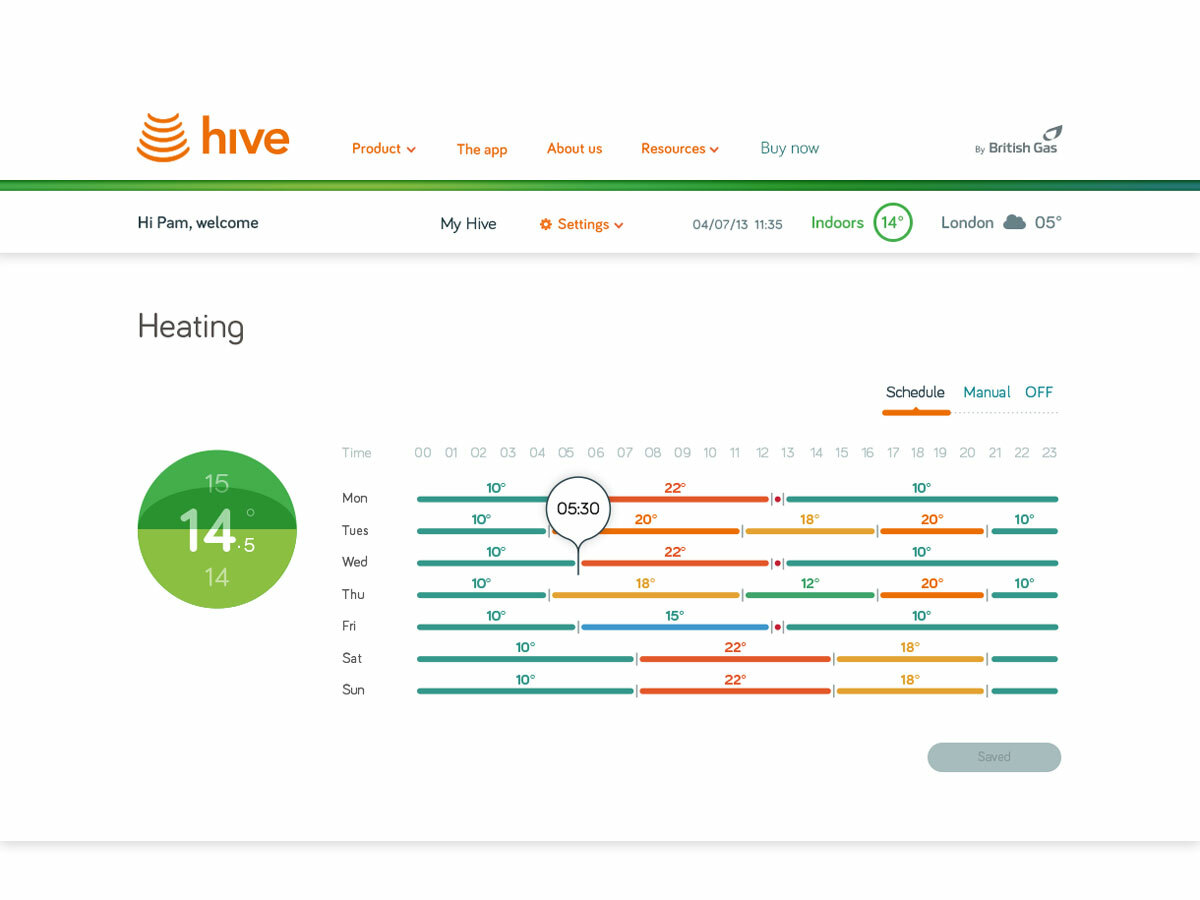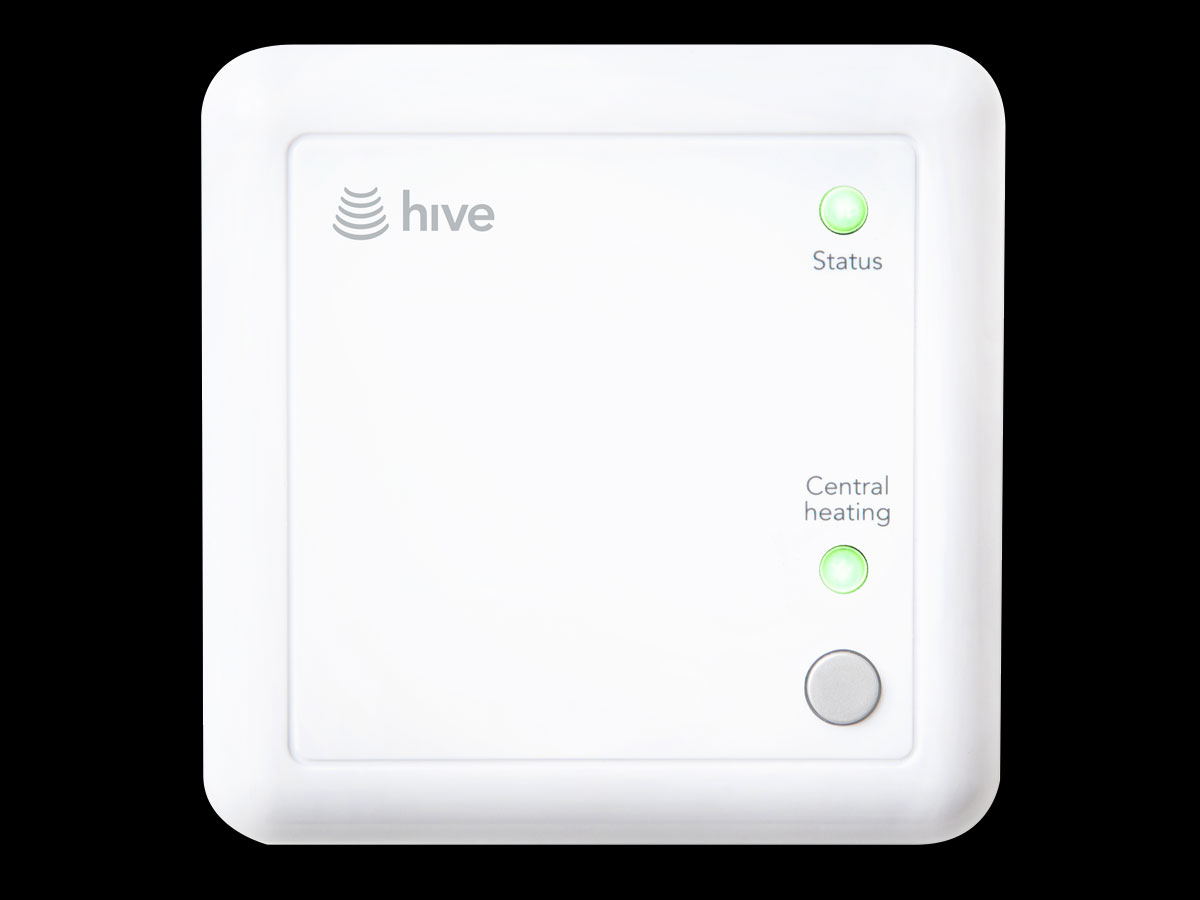British Gas announces smart thermostat
Hive allows you to control your home's cosiness via the Internet and smartphone app

Energy-thrifty Americans have been trimming their heating bills since 2011 with the Nest thermostat, but smart heating has taken its time making it over here. But now British Gas, which has already installed one million smart meters in UK homes, has announced Hive, its own Internet-controlled thermostat.
The heat is on
British Gas describes Hive Active Heating as a “next-generation remote heating control” that lets you adjust your heating and hot water from your phone or web browser. A wireless receiver sits next to your boiler, a wireless thermostat attaches to your wall, and a small hub plugs into the back of your router. But rather than twiddling the thermostat like someone’s dad in the 1980s, you twiddle with the thermostat via a smart-looking app, like someone’s dad in 2013. The browser-based control screen lets you set a heating schedule and a hot water schedule, and you can look at temperature graphs of how warm your house has been. Maybe you could correlate that against what jumper you’ve been wearing.
Coming next month

Day-to-day use will take the form of quick controls, though – Hive can send you alerts if your home gets too hot or too cold, and a weekly programme lets you set a preset temperature for a certain time – so you could bump up the heating and make sure there’s plenty of hot water after your Sunday afternoon windsurfing session. There’s a one-flick control for shutting everything off when you go on holiday, and Hive will automatically warm things up a little if the house temperature drops below 7 degrees, to stop your pipes freezing.
Hive will be available from the second half of October, at £199 from hivehome.com. It’s not the first smart thermostat, but it will be the one most people hear about and buy, because it’s being made by British Gas. True heating enthusiasts may like to take a look at the home automation kit made by nCube, which lets you program control individual radiators using wireless valves. What’s your favourite temperature?






